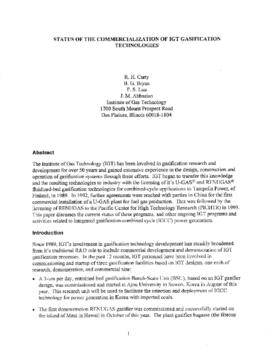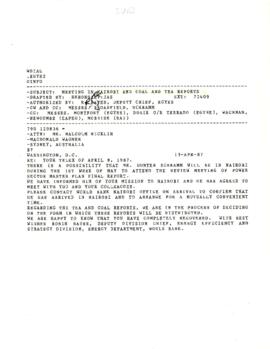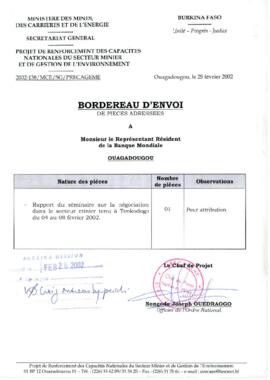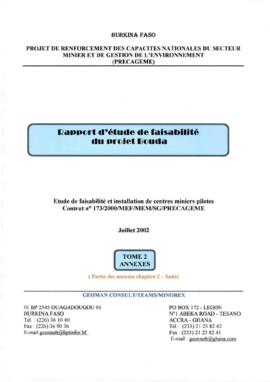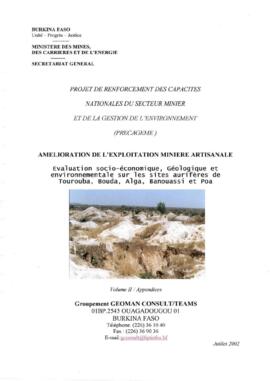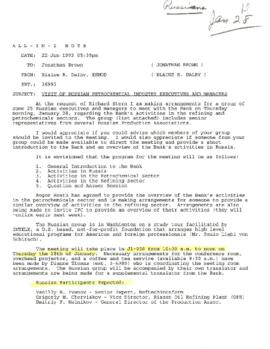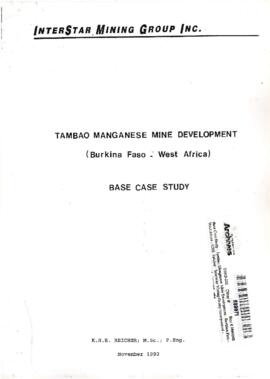Identity area
Reference code
Title
Date(s)
- 1958 - 2010 (predominant 1980 - 2004) (Creation)
Level of description
Series
Extent and medium
830.15 linear feet of textual records, maps, technical drawings, and computer disks
Context area
Name of creator
Repository
Archival history
A portion of records in the series were maintained in the Energy Information Center (EGYIC) instituted in 1982 followed by the Energy and Industry Information Center (EISIC) that succeeded the EGYIC the following year. Files were organized according to the center's classification systems and were under the control and management of the Bank's Records Management unit. Inactive records in the EISIC were sent to the World Bank Group Archives in multiple transfers in the late 1980s.
The remainder of the records in this series were either transferred directly to the Archives from the responsible units according to approved records retention and disposition schedules, or they were transferred from the Non-Regional Information Center (NRIC). The NRIC was the semi-centralized filing station which maintained the general, non-operational sector records according to the Bank-wide classification scheme until its closure in mid-1987; these reflect a smaller portion of records in this series.
Immediate source of acquisition or transfer
Content and structure area
Scope and content
Series consists of records related to the Energy Department (EGY) and successor divisions and units' support to project lending, technical assistance, implementation of the United Nations Development Programme (UNDP)/World Bank Energy Sector Management Assistance Program (ESMAP) projects, economic and sector work (ESW), and other sector analyses. The earliest records in the series are externally produced geological maps (Ghana, 1958), seismic maps, and external technical reports starting from 1959 that were kept as reference mainly for ESMAP energy assessments and petroleum exploration projects.
Related sectors such as industry, forestry, and environment are occasionally represented in the project records, usually in the form of copies of staff appraisal reports, other sector project documents, or memoranda regarding collaboration and information sharing. The series also contains records created in support of mining operational activities primarily during the period of the Oil, Gas, Mining, and Chemicals Department (COC, 2002 - 2010).
The following are three major groupings of records: Energy Assessment Programme (EAP) and ESMAP projects; Bank project lending, cross support and ESW; and general country and topical files. These are described further below. Each grouping represents several different units that maintained the records and these units' separate recordkeeping systems over time.
EAP and ESMAP project records
The largest volume of records in the series (1958 - 2002) relate to energy sector projects to aid low- and lower-middle income countries, particularly oil-importing nations, that were carried out under ESMAP and its precursor program, EAP. In operation from 1980 to 1987, EAP was the technical assistance program co-sponsored by UNDP and the Bank to diagnose a country's most serious energy problems and evaluate options. Assessment missions produced reports for over 70 countries. ESMAP was created in 1983 as a trust-funded program to complement EAP and implement the assessment priorities. After EAP ended in 1987, ESMAP took over assessment work. As the executing agency for ESMAP and EAP, the Energy Department units and successor Industry and Energy Department (IEN) units were responsible for implementing the program and its projects, providing management and budgetary support, recruiting consultants, and preparing reports. From December 1991 to December 1992 when ESMAP was an independent department from IEN, the ESMAP Operations Division (ESMOD) and ESMAP Strategy and Programs Division (ESMPD) carried out ESMAP projects. Since ESMAP's establishment, projects were frequently undertaken in collaboration with consultants who visited project recipients and field sites, researched and collected data, and prepared reports.
ESMAP projects included various activities in the areas of: assessments, project formulation and justification (feasibility and prefeasibility studies), and institutional and policy support (technical assistance, strategies, etc.). Projects were financed or cofinanced by UNDP, theBank, and bilateral and multilateral donors.
The records document the initiation, analysis, preparation, and implementation stages of ESMAP projects in the energy subsectors in collaboration with the Bank's regional operational units, UNDP Division for Global and Interregional Projects, UNDP resident representatives, and occasionally the Bank's Industry Department units. Regional units were involved in the design, review, and dissemination of the country assessments and other ESMAP projects. Although a majority of projects are country-specific, a portion of records relate to regional and global projects. The records also provide insight into the program's evolution to meet the complex demands and diversity of the energy sector.
An early focus of ESMAP was household energy and a study series called ESMAP Household Energy Strategy Studies (HESS) was produced. These were country-based strategies to assist governments to improve capacity to transition from traditional to sustainable energy systems for households in urban and rural locations and establish regulatory reforms. Many, but not all, of the studies were conducted in African countries and published as ESMAP papers (ESM and other numbered reports) beginning in the early 1990s. There are also records from the early 1980s to the 1990s that are related to the Biomass Gasifier Monitoring Program.
Other ESMAP project topics and related research include: electricity; rural electrification; petroleum (oil and natural gas) development and conservation; improved stove; kerosene and liquified gas stoves; environment health and safety; power and gas pipelines; gas flaring reduction; greenhouse gas reduction; clean coal; heat supply restructuring and conservation; wind farm development; photovoltaic systems and technology; waste to energy; women in energy; and energy sector reform. Certain ESMAP project files also relate to the industry sector: industrial energy efficiency; industrial energy conservation (including Sri Lanka and Senegal); interfuel substitution and power generation; and energy efficiency in the fertilizer and cement industries (including Syria and Poland).
Record types include: ESMAP task descriptions; drafts and final Activity Initiation Briefs (AIB); AIB background and project proposals; initiating project memoranda; draft contracts; copies of regional unit back-to-office reports (BTORs) of project missions; BTORs of ESMAP assessment missions, project preparation, and follow-up missions; Terms of Reference (TORs); aide-memoires detailing conclusions of missions; final draft (yellow cover) Activity Completion Reports (ACRs) circulated for review and approval; approved draft (green cover) ACRs; project working papers; energy audit reports; consultant reports; agenda and minutes of internal meetings and with government officials and copies of review meetings prepared by regional units; budget sheets; final and draft ESMAP country assessment reports; assessment status reports; UNDP project documents; data tables, i.e. consumption calculations, conversion factors; handwritten notes and data; press clippings; and external reference material such as discussion and conference papers, government and corporate reports, guidelines, legislation, and equipment brochures. The reference materials were created and compiled by staff and consultants when conducting research work for ESMAP projects such as energy assessments, strategy studies, and surveys.
Correspondence consists of memoranda, letters, cables, facsimiles, or All-in-1 hard copy messages between the energy units and regional units or consultants, Bank resident missions, government officials, or UNDP representatives. Topics discussed in the correspondence include requests for ESMAP assistance, resource allocation, collaboration between energy sector units and regional units, sharing project information and updates, reporting on project issues or field investigations, data collection, financing and allocating resources for projects, dissemination of reports, recruitment and reporting of consultants, and other operational and administrative matters. In addition to textual records, there are also an undetermined number of technical drawings, geological and country maps, and computer disks.
ESMAP project records also relate to the organization and delivery of regional and country-based seminars, workshops, and conferences that were often included as a training component in the technical assistance projects as early as 1983. These workshops and similar events evolved into a knowledge dissemination function likely in the late 1990s or early 2000s. The events were organized by EGY and IEN division staff in coordination with regional staff, and often involved the recruitment of external consultants to develop materials or background papers or conduct the learning events. Specific conference or seminar topics include but are not limited to, energy efficiency, energy conservation, energy strategy for rural and low-income urban communities, reducing electric power system losses in Africa, and a global windmill testing program workshop.
Record types found in the seminar and workshop files are similar in content to other ESMAP operational files and include: draft and final AIB for the seminar or workshop; proceedings; speeches and addresses; conference agenda and program description with lists of participants; BTORs; TORs; aide-memoires; draft and final workshop reports; copies of consultant contracts; and evaluation summaries. Correspondence such as incoming and outgoing letters, cables, facsimiles, and hard copy emails between IEN staff, government officials, private sector, and consultants document administrative and financial arrangements, invitations, selection of speakers, participants and consultants, collaboration with Economic Development Institute (EDI), outreach, and event follow up. The correspondence also covers substantive matters such as roundtable discussions, policy, statistical data provided in support of a study or event, and sharing of country sector information.
Less commonly, ESMAP funds were also used for assistance in organizing energy sector donor meetings for specific countries such as Senegal (1985 - 1986); a very small volume of records relate to these meetings and preparations.
A small portion of correspondence and other records maintained in the Non-Regional Information Center (NRIC) indicate the UNDP project identifier number and are nearly all general files related to ESMAP (1981 - 1987) or assessments (1980 - 1986) and Biomass Gasifier Monitoring Program (1983 - 1987) that were financed, or partially financed, by UNDP under ESMAP. Other project files relating to testing and demonstration of solar pumping systems and renewable energy technologies do not always include mention of ESMAP and may be separate projects.
Project lending, cross support records, and Economic and Sector Work (ESW)
Records in the series also reflect EGY, IEN, and successor energy units' support to project identification, preparation, and supervision for investment, structural adjustment, and other development projects that were financed, cofinanced, or managed by the Bank's regional operations units (approximately 1980 - 2010) with reference material dating from the early 1960s. These include completed and dropped projects. Energy sector units aided project preparation by selecting and recruiting consultants and supporting consultant work and reports. They also reviewed operational documents and provided guidance, advice, or analytical tools to regional offices.
Projects involved, but are not limited to, petroleum exploration (both oil and natural gas), hydroelectric power, power distribution and efficiency, gas engineering, gas utilization, and energy sector rehabilitation. Specific projects supported by the COC mining and energy units that represent the more extensive files include: Mining Sector Capacity Building and Environmental Management Project - Burkina Faso P000283; Mine Closure and Social Mitigation Project - Romania P056337; Sustainable Management of Mineral Resources - Nigeria P086716; Mineral Resources Management Capacity Building Project - Mozambique P001808; Energy Conservation Project - China P003606; Coal Sector Rehabilitation Project - India P009979; and Environmental Management Capacity Building Pilot Project of the Hydrocarbon Sector - Bolivia P065902.
Record types include: memoranda sent and received by the energy units discussing project support, progress, or provision of comments on reports; minutes of meetings; notes for files; briefing papers; BTORs; aide-memoires; white cover reportcopies; supervision reports; project performance audit reports; aide-memories resulting from review missions by regional staff and or consultants; consultant proposals; CVs; draft reports, particularly from the gas industry; copies of loan agreements and related documents; and externally produced geological maps.
From time to time, ESMAP externally funded staff would provide cross support to the Bank's country departments on economic and sector work and technical assistance, as well as lending preparation and appraisal, at the financial expense of the country departments. Cross support records are also reflected in this series and include: ESMAP and consultant feasibility reports and studies; BTORs; curriculum vitaes of consultants; letters and facsimiles and other correspondence (between IEN, consultant, government officials) concerning progress on reports, project status and country energy situation, procurement matters; and internal memoranda or All-in-1 hard copy messages between IEN and regional units.
Series also contains records created and compiled by EGY and successor unit staff to produce the ESW analytical reports that helped direct development programs and project lending. Records span the period from approximately 1978 to 1996 and include: surveys; survey result reports; draft and final study reports, including World Bank Study of multiple country energy topics; working papers; TORs; Board documents; proposals; internal memoranda between IEN divisions and regional units; letters to and from external parties regarding collaboration on studies; statements and speeches of IEN director or Bank Group senior management; and background documents including external reports, national energy legislation, and supporting data such as pricing figures. Numerous files (for which approximate dates follow), relate to reviews of Bank lending for natural gas (approximately 1983 - 1992), petroleum, oil and gas contracts, privatization and other issues (1978 - 1991), Indonesia gas development planning (1988 - 1993), electricity (1989 - 1993), various environment matters (1988 - 1993), ESMAP, and files by country or region.
General country and topical files
General country and topical files in the series (1980s - 2005) are labeled as such and include a mix of reports, correspondence, and other records related to both ESMAP and Bank lending activities in oil, gas, and mining as well as country studies and reports in these sectors. A portion of the mining files titled "development activities" are organized by country. These records describe the status of mining projects, investments, and development activities, as well as discuss government policy in member countries and minerals and mining issues including conflict diamonds and coal. Other country and subject files (1992 - 2004), although fragmentary, contain mostly hard copy emails and related records maintained by Craig B. Andrews (Industry and Mining Division, IENIM) and Jeffrey Davidson (Policy Division, Industry and Mining (CMNPO), later the Policy Division, Oil, Gas and Mining (COCPO). These files relate to operational and project support of IFC/Bank projects in oil and gas and mining and mining activities in Nicaragua, Senegal, Burkina Faso, and Madagascar.
A set of IEN subject files (1987 - 1998) shared by the Power Development, Efficiency and Household Fuels Division (IENPD), Oil and Gas Division (IENOG) broadly cover project management and program support topics. The files were further classified into Country Area Programs (CAP) and Management or Program Support (MPS). There appears to be some overlap between the two. Many of the files relate to ESMAP projects including proposals, assessments, recruitment and reporting of consultants, and arrangement and delivery of ESMAP workshops. Other management or program support files relate to organization and delivery of Energy Week program, global themes such as energy efficiency and renewable energy, clean coal case studies, and country-level activities. Specific record types include many of those mentioned in the above sections.
Appraisal, destruction and scheduling
Accruals
Further accruals are expected.
System of arrangement
Most records are arranged alphabetically by country, and then by subject, study title, or project loan or credit number. Other files are arranged alphabetically by subject.
Certain "series" of records originally maintained in the semi-centralized Non-Regional Information Center (NRIC) or in the Energy and Industry Information Center (EISIC) that relate to a specific function or unit, in this case the ESMAP and UNDP project files, were arranged in this functional department series.
Conditions of access and use area
Conditions governing access
Records in this series are subject to either or both the World Bank Policy on Access to Information and the International Finance Corporation Access to Information Policy.
Conditions governing reproduction
Records in this series are subject to either or both the World Bank Copyright Policy and the International Finance Corporation Copyright Policy.
Language of material
- English
- Spanish
- French
- Portuguese
- Arabic
- Swahili
- Bulgarian
Script of material
Language and script notes
Physical characteristics and technical requirements
Finding aids
Allied materials area
Existence and location of originals
Existence and location of copies
Related units of description
Notes area
Alternative identifier(s)
Access points
Subject access points
Place access points
Name access points
Genre access points
Description control area
Description identifier
Institution identifier
Rules and/or conventions used
Internal World Bank Group Archives rules
Disclosure status
Level of detail
Dates of creation revision deletion
31 March 2022


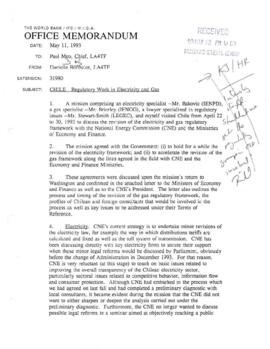

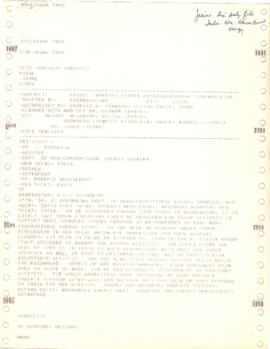



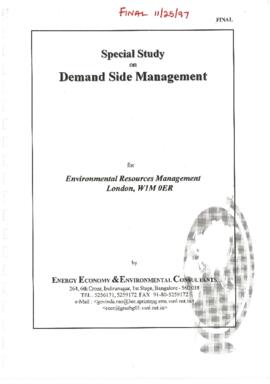
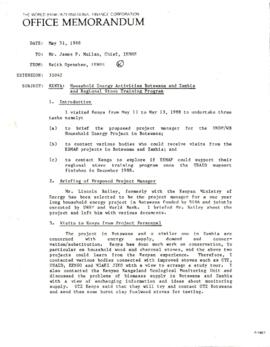

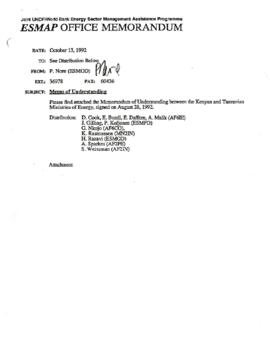



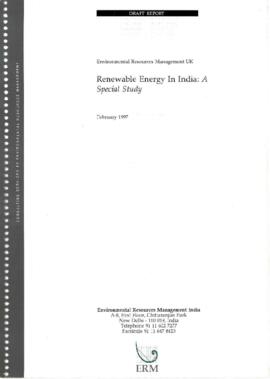
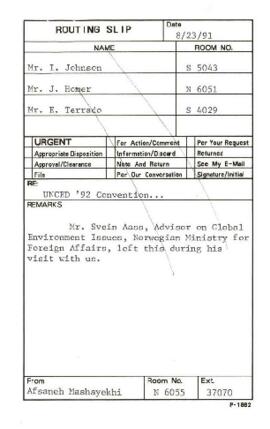
![Energy Sector Management Assistance Program [ESMAP] - Project Management Records - Miscellaneous ...](/uploads/r/world-bank-group-archives/f/c/d/fcd2e4c4aeac3bc98b9c124df8e59a1f01d87f036ece7053b15198acd01afb72/WorldBankGroupArchivesFolder1136960_142.jpg)
![United Nations Development Programme [UNDP] - Energy Sector Management Assistance Programme [ESMA...](/uploads/r/world-bank-group-archives/a/1/0/a10265d18f394de64f6022a9b49e9561191c8bd834f69d9b83052c507072c681/WorldBankGroupArchivesFolder1123154_142.jpg)
![UNDP - INT/83/005 - Energy Sector Management Assistance Programme [ESMAP] - 1981 / 1983 Correspon...](/uploads/r/world-bank-group-archives/2/7/8/2780a82fdc50156161af536e2653e185982fb9716bf19519a68d86c626e0d53f/WorldBankGroupArchivesFolder1181086_142.jpg)
![UNDP - INT/83/005 - Energy Sector Management Assistance Programme [ESMAP] - 1984 / 1986 Correspon...](/uploads/r/world-bank-group-archives/f/9/5/f9547b6aa178ccb3078b7cba29ca6ba624b7a41a5af124ba36245c091e7079c5/WorldBankGroupArchivesFolder1181087_142.jpg)
![UNDP - INT/83/005 - Energy Sector Management Assistance Programme [ESMAP] - 1984 / 1986 Correspon...](/uploads/r/world-bank-group-archives/6/d/d/6dda3a0cda2d42b1d28c8425a048c45a15652e6b47c7f1f2f436e2d052472a63/WorldBankGroupArchivesFolder30189795_142.jpg)
![UNDP - INT/83/005 - Energy Sector Management Assistance Programme [ESMAP] - 1984 / 1986 Correspon...](/uploads/r/world-bank-group-archives/4/2/e/42eec1c8e02730d8f0ff628e3d17b1a925c4900f11a73790b5d3b1d217c5a339/WorldBankGroupArchivesFolder30189796_142.jpg)
![UNDP - INT/83/005 - Energy Sector Management Assistance Programme [ESMAP] - 1984 / 1986 Correspon...](/uploads/r/world-bank-group-archives/6/e/1/6e17e3f54c4c845a97f3f9c8bf6b615b2944f158c6b61262d8051fa312fcab68/WorldBankGroupArchivesFolder30189793_142.jpg)
![UNDP - INT/83/005 - Energy Sector Management Assistance Programme [ESMAP] - 1984 / 1986 Correspon...](/uploads/r/world-bank-group-archives/3/d/8/3d8f6eac4e77cca8125752eca8b7ea4d00b8ed1757f547384969af1fbe6b6045/WorldBankGroupArchivesFolder30189792_142.jpg)
![UNDP - INT/83/005 - Energy Sector Management Assistance Programme [ESMAP] - 1984 / 1986 Correspon...](/uploads/r/world-bank-group-archives/0/5/2/05282c7e6170e58c67aeb3f4e1eb1af23702664fe202c547c5b28f929d5795f4/WorldBankGroupArchivesFolder30189798_142.jpg)
![UNDP - INT/83/005 - Energy Sector Management Assistance Programme [ESMAP] - 1984 / 1986 Correspon...](/uploads/r/world-bank-group-archives/1/f/a/1fa9991417d41712092943b3636e82624eced9f2397f96cde4fb78aa458f03f5/WorldBankGroupArchivesFolder30189794_142.jpg)
![UNDP - INT/83/005 - Energy Sector Management Assistance Programme [ESMAP] - 1984 / 1986 Correspon...](/uploads/r/world-bank-group-archives/8/3/2/8327a74f3310f2a6dd11fe8b9d6ce7796a1202fc4f31ad3700697eeed851808d/WorldBankGroupArchivesFolder30189797_142.jpg)

![Environment - Coal Issues - [IENGU] - Correspondence](/uploads/r/world-bank-group-archives/8/a/7/8a7df0fc7fc564af42c6ce750dfaaf9a9ea78f4313ea2aa056389fe1fa415dd2/WorldBankGroupArchivesfolder1262989_142.jpg)
